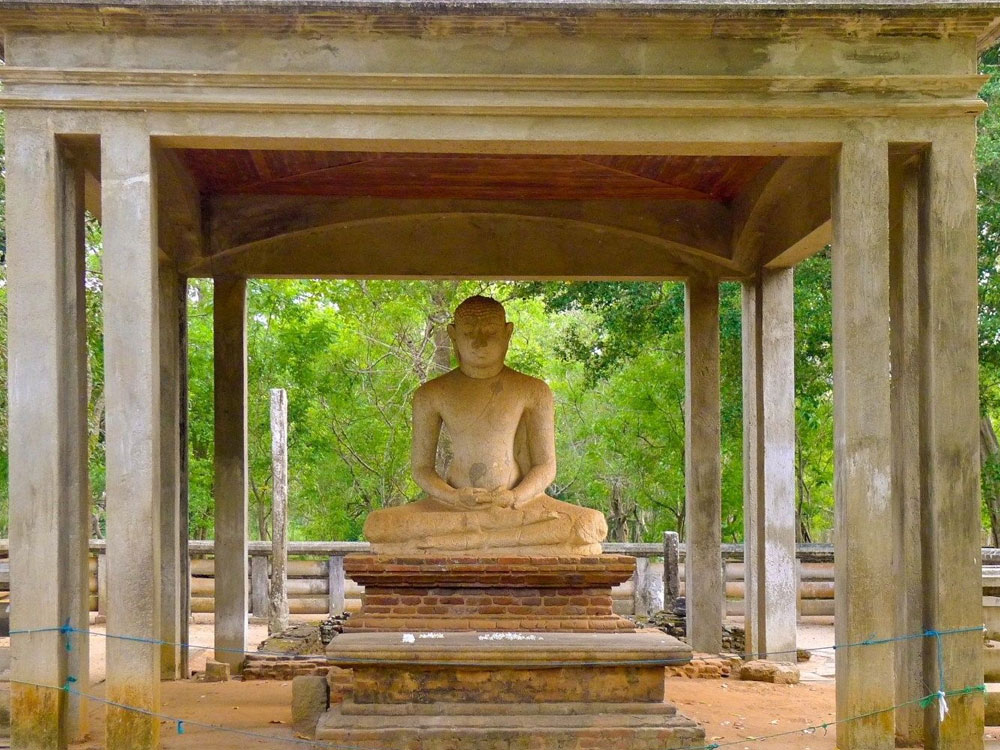|Apologetic Integration
It is rather a disenchanting moment when the doctrine your parents subscribed to and expounded to you was not the armour you thought it was.

It is a lie when people say ‘children do not see colour’ in reference to a person’s skin tone. They do. It is just that they don’t have any preconceived ideas, prejudices or cultural memory associated with one colour. They learn and assimilate those from the world around them.
It was a comfort after having arrived in the UK for the first time to see a dark face on TV. Not just a dark face, a dark face that was doing something as important as reading the news at 10’o’clock, a dark face that was a household name and was a constant. Sir Trevor McDonald obviously is not of South Asian origin but when you were one of only two children at your school that were not white and you had a very limited grasp of the English language; you develop a tendency to latch on to any face in public life that wasn’t white. The world in the seventies was made of geographical cultural silos, spanning continents, countries, counties, towns, even families. Sometimes the borders overlapped and inter-twinned but for all intents and purposes, they were silos.
Our own family silo in the midst of Marston Green in the West Midlands numbered four, later extending to five as my youngest brother was born. Marston Green was a leafy suburb having developed from a small village. We occupied the far end of Marston Green Maternity Hospital that housed a self contained flat. A flat that only had one temperature setting as it sat above the main boiler house for the hospital. Our front door opened into a hospital corridor and our back door into verdant hospital grounds.
To the glee of my brother and I we were to learn that the store cupboard alongside our front door housed the sweets’ trolley for the patients. If we timed it right the elderly lady that piloted it around the wards would always give us contraband when she saw us. We probably came across as ungrateful as we quickly disappeared into the flat to consume our bounty. We did try to be polite and stay but she had a moustache. A plentiful moustache. So it was difficult for us to resist our eyes being drawn into a stare. To avoid this social faux pas our only solution was to exit in haste. I think her name was Dorothy or Doris. She would later baby sit us on occasions. A kind and gentle individual who tempered the unfriendly faces that inhabited her silo.
We grew up spending times in other silos with our cultural heritage. The main touch points were when we visited some of the Pakistani food shops in Birmingham in search of ‘exotic’ foods or spices from home (items now common place in supermarkets such as avocados). Other touch points were the Buddhist temple (a rudimentarily converted Victorian house) on Booth road or when we socially mixed with the other dissipated Sri-Lankans living in and around Birmingham, or if we were lucky further afield.

Galle Fort, Sri-Lanka. The colonial past of Sri-Lanka is impossible to escape. It is etched on the collective consciousness in Sri-Lanka and added to its cultural constitution.
In the seventies there were not many Sri- Lankan immigrants in the UK, there are more now. The 2011 census recorded over 125,000 Sri-Lankan born residents in the United Kingdom (UK). We (as with many of the others) considered ourselves expats and belonged to the professional strata of Sri-Lankan society. It has always struck me as odd that when we consider other ethnicities we fail to recognise the societal structure and cultural values along with the inherent complexity that exist within them; we tend to treat them as one homologous group. This failure to differentiate was especially very true of the British media then as it is now.
The current ubiquitous use of the term ‘Black, Asian and minority ethnic’ (BAME) is a great source of irritation. It has very little utility when referencing differences in disease outcomes and a similar wanting when describing cultural attitudes. It is simply not acceptable that we amalgamate similar ethnicities or skin tones. Arguably however it may be the modern collective term for a shared group of experiences for non-whites growing up in Britain. In a macroscopic sense we may be homologous in our genetic make-up, however the individual genes and the polymorphic variation matter, albeit in a subtle and nuanced manner -but they do matter. The same is true of each iota of the myriad of cultures we have in the UK.
So returning to the reassurance that was Sir Trevor. It seemed apparent to me that now we were here in England the only route to being accepted was to outwardly appear more English than the indigenous population. To try and blend in, avoiding disruption and most of all not to attract attention to one self. I am embarrassed to say that I was grateful that our religion was Buddhism, not one that necessitated public acknowledgment of faith such as Sikhism or Islam. Our surname was short, (even mistaken for Heath in some circumstances), not a long multi-syllabic Sri-Lankan one. In my youthful and naïve head (with it propensity to seek acceptance) these two facts alone were to be venerated.
Like an automaton I was attempting to morph into some South Asian Mr Darcy. My mind seemed impervious to the reality of my situation with consciousness only arriving in my late youth. On reflection being spat at, called a Paki (along with other verbal insults), being patronised all should all been cautionary to me. My keenness to seek integration into English society had me apologetic of who I was, even more grotesque; I was apologetic for other immigrants making their home in the UK. Inexplicably I was following an imperceivably but existent mantra.
It really did not occur to me that how I was being treated on a daily basis was based on the colour of my skin. I don’t just mean by the people I interacted with but how the media, institutions all spoke to me. Earnestly the vast majority of this treatment was well intended – I was not the only automaton, however the subliminal nature of this ‘mantra’ and it being rooted deeply in British culture and psyche meant it was inescapable -‘British is best, rule Britannia’.
Those who could see it’s tendrils reaching out from British Institutions rebelled, only to put back into their silos with platitudes promising change heaped upon them. We never extradited ourselves from this incantation.
A veneer to demonstrate an evolving society was hastily thrown over the extreme hateful right. Indexes and measurements were created to demonstrate how inclusive we had become, to exemplify our diversity. We had expunged inequality and discrimination based on an individual’s race. To make sure it never came back, to help us believe that we had become a better society we even enshrined it in law. However even as Parliament debated the bill, the events of 9/11 had allowed old prejudices to break the veneer.
Where we are today (at moments) fills me with dread. Corporate and informed society will argue that whilst more needs to be done that diversity, equality and inclusion are taking hold. However a quick glance at the executive leadership teams and boards of the top ten global pharmaceutical (my industry) companies reveals how little progress has been made. There are some exceptions but they are scarce. The narrative is the same elsewhere.
The diversity league tables devised by management consultancy firms are meaningless. This is especially true if you consider that ‘diversity’ is poorly defined across industries and moreover diversity is not a quantitative index, its qualitative. It is vital that more is done. Without doing so many industries will continue to be siloed and fail to attract individuals from diverse ethnic backgrounds.
It is no longer enough for a profession to remonstrate that they would be willing to promote people of colour through their ranks but sadly none come forward to be considered.
Children and adults from minority groups need to see familiar faces leading and being successful in a wide variety of professions and industries if they are to be enticed to follow a similar path. Even in medicine, where there are many South Asian healthcare professionals, there are scarce few to be found leading departments in elite institutions. Doctors of African origin are scarcer still.
My younger life was one continuous competition to be the best amongst my peers. That was the only way to tip the scales in your favour. If then the inherent elitism of a profession or institution is layered upon this it becomes a cauldron of pressure. This is why Asian and African parents try to keep their children focused on achieving and dissuade them in engaging in social distractions. This obviously is counter productive, reinforcing the silo the child is being brought up in and those they are not a part of. This can create resentment in several modalities and not just the child’s own enclave.

Samadhi Buddha Statue, Mahamevnāwa Park in Anuradhapura, Sri Lanka. Buddhism has given me the resilience and doctrine to navigate the cultural challenges I have faced. It’s a doctrine that transcends culture.
It is rather a disenchanting moment when the doctrine your parents subscribed to and expounded to you was not the armour you thought it was. Revisiting my comments about medicine; another naivety (amongst the plethora I had and probably still have) was the belief that science, academia and my own profession was a meritocracy. I thought these were the last bastions of a nobler part of humanity. They are not and appear to keep falling further from that ideal.
So all my weapons are disarmed, my armour has been weakened by an invisible agenda. An agenda that most of us are oblivious to. Who created it? The slave traders of the past, the imperialists, the conquerors, the suppressors, maybe the devil themself? I think the ancient Greeks knew. The metaphor in the myth of Pandora’s Box or rather it’s content that were unleashed upon humanity possibly describe the start of the agenda, the mantra. The abominable way we sometimes treat others that our different to us is old as humanity itself. So in 2020 when it appears we have made little progress, the realisation is beyond frightening. We are all still monkeys defending our own little troop.
I do believe, as the Greeks did that there is hope. We do need to do better. However to do so means extraditing ourselves from perceived cultural norms, from nationalism and most of all from our historic narrative. Rather like the planet we inhabit, we are in continuous movement. There is no opportunity to go back. What has happened has happened. The time for apologies has passed. It is paramount we act now. We must place ‘Sir Trevors’ in each silo across the globe, to send the message that we are wonderous as a species and each one of us has the opportunity to write our destiny to succeed our dreams.
|POSTSCRIPT
When I saw the ITV advertisement below it brought a wry smile to my face. Though on reflection, the fact Sir Trevor is still ITV’s paramount black icon demonstrates how far short of our inclusion and diversity objectives we are.
